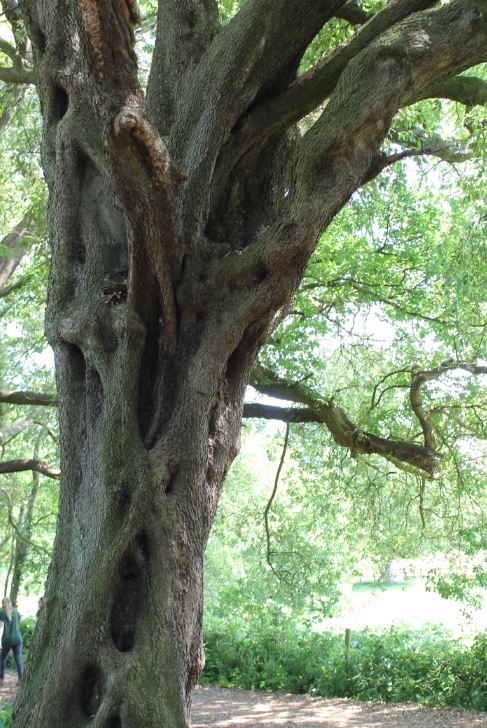The Facts
Tree Type: A large evergreen tree with a particularly dark bark and dark green leaves. It likes a Mediterranean climate and is known for its very hard wood. It was introduced to the UK in the late 1500s and thrives in the south, but it can be killed by harsh winters.
Location: The holm oak is found across northern Spain and the coastal areas of southern France, Italy and the Balkans. It is good for coastal habitats because it is not damaged by salt spray.
Ecology: When it has space and light the holm oak can spread out to grow an enormous crown. The acorns are slightly more pointed than English oaks, and are an important source of food for wildlife. The young leaves are spiny to prevent animals from eating them, which is why this tree is also called the holly oak. As a broadleaf tree and an evergreen, the holm oak provides a good habitat for birds.
